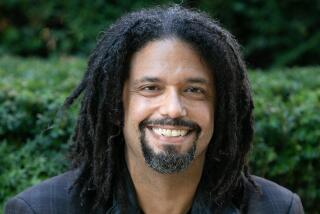Dog Bites Actor, Giving Us Promoter
Rin-Tin-Tin, the dog that saved Hollywood, used to perform many feats of public service on screen. He carried babies out of burning buildings, saved the cowboy from drowning, rescued the schoolmarm from the renegades.
But the greatest service he ever performed was driving Tom Gallery out of acting.
You see, Thomas Patrick Scarsfield Gallery hated acting. Not as much as he hated Rin-Tin-Tin, though. And vice versa.
Every kid in America loved Rin-Tin-Tin. Gallery used to root for the bad guys.
The trick with Rinty, as his handlers called him, was to send the leading man’s clothing over to him in advance and let him familiarize himself with their scent. They did it with Tom’s wardrobe, but Rinty flew at the owner’s throat when he showed up.
Once, there was a scene in which Tom had to be pulled from a burning war plane by the dog actor and he had a special harness rigged up under the his neck for the dog to pull him out. Instead, Rin-Tin-Tin bit him in the ear and left him in the flames.
The moral to the story is, Tom Gallery was never cut out to be an actor in the first place. The son of a Chicago police captain, a former seminarian and tank corps veteran of World War I, Tom Gallery was really meant to become one of the top sports promoters of all time, a field Rin-Tin-Tin drove him into.
Gallery left the sound stages of RKO for the matchmaker’s chair at the old Hollywood Legion Stadium. It was a fight arena where the great Henry Armstrong, Ceferino Garcia, Baby Arizmendi and Bert Colima used to brawl. Its most famous punchout, though, took place between singer Al Jolson and gossip columnist Walter Winchell, and its ringsiders traditionally outshone the main-eventers.
Gallery saw to it that the pick of Hollywood society vied for seats. Matinee idols were cornermen, leading ladies were queued up to take the pugilists home and the Hollywood Mafia rubbed elbows with cinematic royalty.
When he put on the first--and one of the only--heavyweight title fights held in L.A., Joe Louis vs. Jack Roper, Bing Crosby, no less, was mike-side, broadcasting it to the world.
Gallery was not just a fight promoter. He persuaded George Preston Marshall to bring his Washington Redskins out to the Coast for exhibition football. In the 1930’s, he built a mammoth ski jump in the L.A. Coliseum, imported snow machines and the world’s best ski jumpers. The day of the event, he recalls, “the skies opened up--not for just a day, not for overnight but a week of steady driving rain.”
Gallery lost his wallet, and the place he kept it, with a shrug.
He went East during the war to take over the football Brooklyn Dodgers for Dan Topping, then moved to Yankee Stadium when Topping, Del Webb and Larry MacPhail secretly acquired control of the baseball Yankees.
He was shocked to find that the Yankee front office kept tickets in a cigar box in a downtown office, had no machinery for selling season tickets, printed one-page programs and had a public-address system that sounded like a guy reading a ransom note through a handkerchief.
He went to work for the DuMont television network at a time when its only asset was its prestige. “Dr. DuMont was a man 20 years ahead of his time but he had no capital,” Gallery said.
Running a bluff, Tom Gallery flew out to Kentucky to see Happy Chandler, then the commissioner of baseball, about getting the rights to televise the World Series. “I found out this razor company had the rights in semi-perpetuity for $100,000 a year. A lousy 100 thousand a year! I told the commissioner DuMont would bid a million for starters. Happy said: ‘But you don’t have it!’ I said: ‘Don’t worry, we won’t get it.’ ”
In the bidding war that followed, the World Series went for $1.6 million to the razor conglomerate, which never forgave Gallery. “I hated to see baseball giving away the store,” he said.
RCA’s David Sarnoff was impressed and put Gallery in charge of NBC sports. Along the way, Gallery deposed Bill Stern, at the time the most widely heard sports broadcaster in the world.
“I sent Bill Stern down to cover the U.S. Open in Dallas in ‘52, and he disappeared,” Gallery said. “He had gone out and bought a hardware lock for his hotel room and locked himself in. No one could get through to him. I hired a young broadcaster, Lindsey Nelson, to go and knock on his door and if he couldn’t dislodge him, to go do the broadcast himself. He couldn’t get him out.”
It was the beginning of a long and beneficial relationship between Gallery and Nelson who recalls, in his book “Hello Everybody, I’m Lindsey Nelson” that Stern did eventually surface in that Open.
Stern contacted the tower one afternoon to announce that he had golfer Dutch Harrison in tow and on cue, and the mike was thrown to him. “We have Dutch Harrison, a veteran golfer who has just finished his round for today,” Stern told his coast-to-coast audience. “Dutch, how is the course playing?”
There was a long lull, then a voice said: “I’m not Dutch Harrison.”
Then, Stern identified George Fazio as a member of three successive threesomes coming to the 18th hole. The producer was annoyed. “What is Fazio doing--hiding in the bushes on 18 and joining with each threesome that comes through?” he asked.
Stern--and thus the network--had bigger troubles than a ubiquitous George Fazio, however. Stern was on morphine.
When his wife went to Gallery, he told her to put her husband in a Connecticut rehabilitation center and the company would pay for treatment. The company lawyers were aghast and stormed in to protest.
“I picked up the phone and called General Sarnoff,” Gallery recalled. “He said: ‘If the man is sick, of course we’ll take care of him.’ I threw the lawyers out and never heard from them again.”
Gallery was an early day Roone Arledge, although he prefers to think of Arledge as a latter day Gallery. He recognized early on the value of pro football. He signed Pittsburgh and Baltimore in the days when the Justice Department would not permit a league package deal.
When the antitrust restrictions were removed and CBS submitted the winning bid of $28 million, the deal could not be consummated because Pittsburgh owner Art Rooney stubbornly insisted on his handshake deal with Tom Gallery. Gallery had to phone him personally and release him from their agreement.
Tom Gallery, now 87, is finally out of the promoting business. But he still shudders to think what might have happened if Rin-Tin-Tin hadn’t bitten him in the ear under the burning plane that day.
“I’m the only guy outside of a few gas-meter readers who had to change careers because of a dog bite,” he said.
Rin-Tin-Tin did almost as much for network sports as he did for Hollywood.
More to Read
The biggest entertainment stories
Get our big stories about Hollywood, film, television, music, arts, culture and more right in your inbox as soon as they publish.
You may occasionally receive promotional content from the Los Angeles Times.










